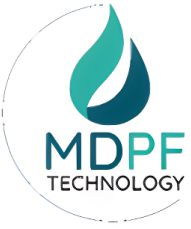This is an article about cryptocurrency, private sales, Flow (FLOW), and Polkadot (DOT), focusing on the title “Cryptocurrency Frenzy: A Look at Private Sales, Flow, and Polkadot”.
Cryptocurrency Frenzy: A Look at Private Sales, Flow, and Polkadot
The cryptocurrency world has experienced an unprecedented boom in recent years, fueled by the emergence of new technologies and innovative applications. At the heart of this frenzy is the growing trend of private sales, where companies sell their cryptocurrencies directly to investors, bypassing traditional public exchanges. But what does this mean for these private sales and how do they affect the broader cryptocurrency market? In this article, we will delve into the world of private sales, explore the role of Flow (FLOW), and explore the prospects for Polkadot (DOT).
Private Sales: The New Normal

In recent years, public exchanges have faced criticism for their opaque listing processes and lack of transparency. Private sales, on the other hand, offer a more direct path for cryptocurrency investors. By selling directly to private companies or individuals, they can bypass the traditional exchange-based model and avoid some of the regulatory and compliance hurdles.
Private sales platforms, such as CoinDesk’s CryptoCompare, have become popular destinations for companies looking to sell their cryptocurrencies without using public exchanges. These platforms provide a more streamlined process, allowing companies to issue their own tokens and communicate directly with investors.
Flow (FLOW): Blockchain Infrastructure
One of the most exciting projects of recent times is Flow (FLOW), a decentralized application (dApp) platform that uses blockchain technology to facilitate fast, secure, and scalable transactions. Developed by Ithor Labs, Flow aims to transform the way we think about data processing and transfer.
Flow’s native cryptocurrency, FLOW, is designed for use cases such as data storage, analytics, and machine learning. The platform’s decentralized architecture enables peer-to-peer transactions without intermediaries, making it an attractive option for enterprises looking to offload their data processing needs.
Polkadot (DOT): An Interoperability Solution
Polkadot (DOT) is a unique project that aims to bridge the gap between different blockchain networks. By enabling seamless communication and coordination between different ecosystems, Polkadot aims to create a more harmonious and interconnected world of decentralized applications (dApps).
Polkadot’s native cryptocurrency, DOT, is designed for use cases such as interoperability, scalability, and security. The project’s innovative architecture allows it to interoperate with various blockchains, including Ethereum, Binance Smart Chain, and Kusama Network.
Polkadot (DOT) Outlook
With its unique blend of interoperability and scalability, Polkadot is poised for significant growth in the cryptocurrency market. As more and more enterprises begin to adopt the project’s architecture, we can expect increasing adoption rates and a wider range of use cases.
One potential application area for Polkadot is decentralized finance (DeFi), where its interoperability capabilities could facilitate seamless interaction between different lending protocols and assets. With a focus on scalability and security, Polkadot has all the ingredients needed to become a major player in the cryptocurrency space.
Conclusion
The cryptocurrency world is constantly evolving, with new technologies and innovative applications emerging all the time. Private Trading, Flow (FLOW), and Polkadot (DOT) are just a few examples of the exciting projects driving growth and adoption in this market.
Looking ahead, it is clear that these private sales will play an increasingly important role in shaping the cryptocurrency landscape.
